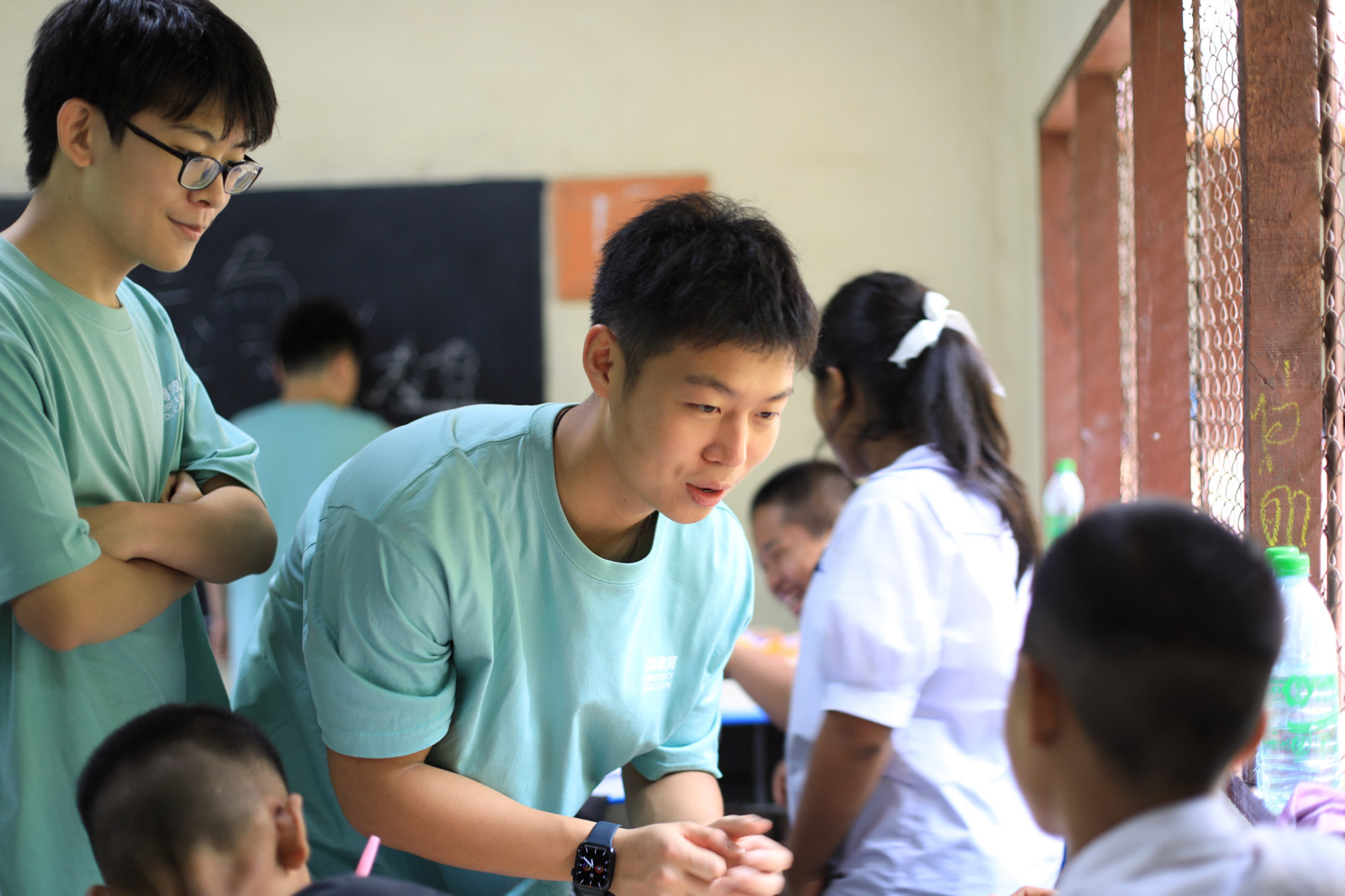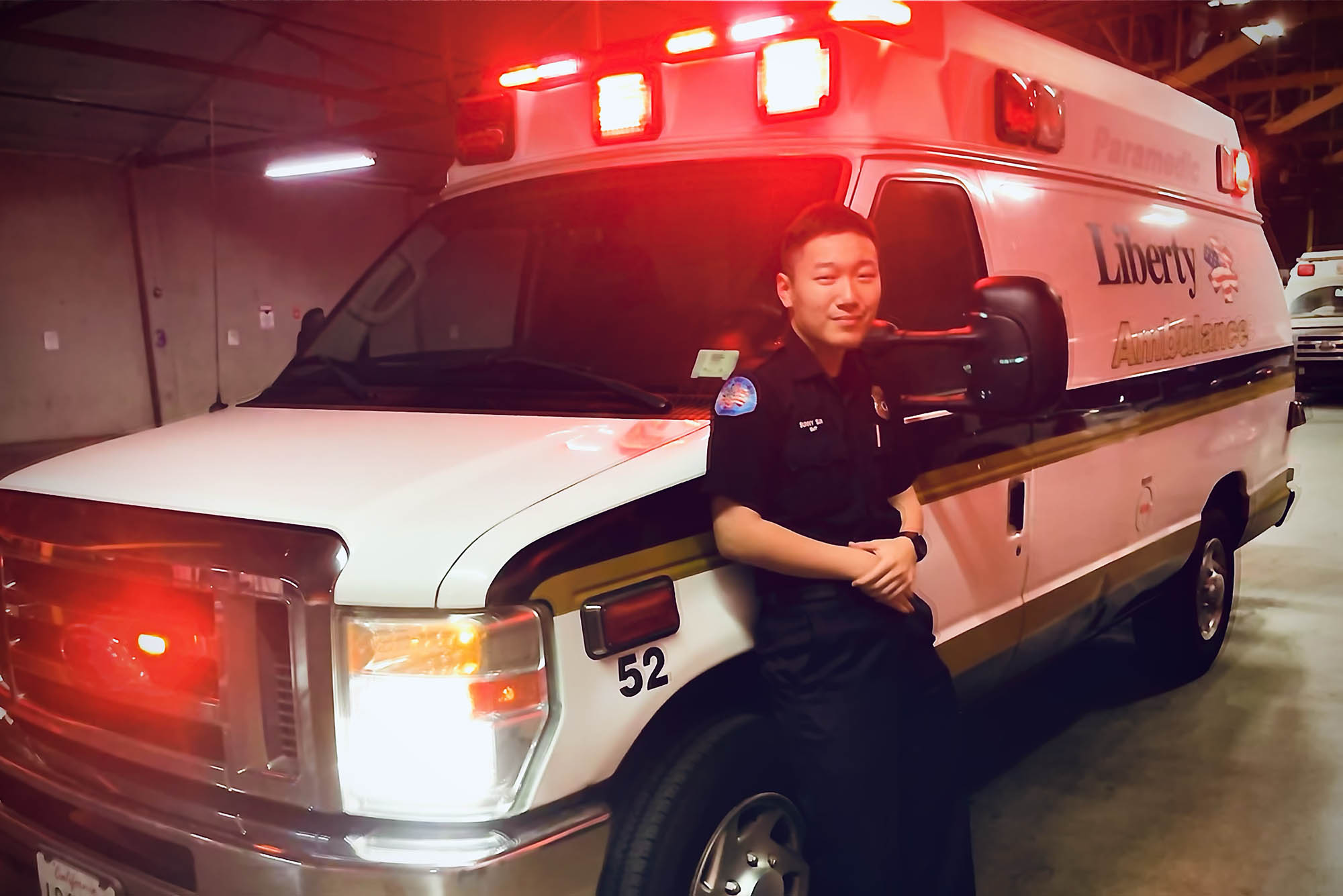A Gap Semester? BU Students Share How They Made the Most of It

A Gap Semester? BU Students Share How They Made the Most of It
“The money will come back, but the time never will, and so I should seize the day,” one CGS student says of her travels
Kate Thompson was initially thinking she would just work when she learned she had to take a gap fall semester, as a condition of her acceptance into Boston University’s College of General Studies. Thompson (CGS’25) says she was a little disappointed, because she’d dreamed of going to BU for so long, and her vision of a typical college experience did not include a semester off after high school.
Before BU started classes in January 2024, Thompson and her 611 fellow CGS classmates were challenged to plan something for their gap time, whether that be travel, internships, working and saving money, volunteering, extra classes, or even taking it easy after 13-plus years of schooling.
Students plan their gap semester experiences with the help of the CGS academic advising team, working to identify goals and think about how their time can best be spent. Thompson attended a study abroad program in Italy and Greece that examined climate resilience and sustainability in and around small villages in the region, and said she didn’t expect it to be as “formative” as it was. “Now I wouldn’t have it any different,” she says.
Alyse Bithavas (CGS’85, CAS’87, Wheelock’89,’97), CGS associate dean for student academic life, describes the gap semester as an invaluable experience for students. It is a unique chance “for them to focus on their personal goals and interests,” she says. “[And] in addition to learning more about themselves, students often use the gap semester to travel, gain work experience, pursue extracurricular activities, or learn a new subject.”
Below, a look at how Thompson and three other CGS freshmen spent their gap fall semesters.
Kate Thompson (CGS’25)
Thompson’s initial plan for her gap semester was to stay home and work at her local American Eagle in Dallas, Tex., to save money. But then she started to really think about this unexpected free time and whether she should take advantage of it to travel.
“I realized I would never have this opportunity again,” Thompson (CGS’25) says. “The money will come back, but the time never will, and so I should seize the day.” She began researching gap semester opportunities, specifically ones where she could travel and learn by doing, and—if feasible—one located in a historical area, as she finds the ancient Roman Empire “super interesting.”

Thompson found a program offered by the company Carpe Diem Education, based in Italy and Greece. For eight weeks, students are taught how these ancient countries have shown resilience in addressing and adapting to climate change while respecting many traditional ways of living. In September, the 11 students in the group made their first stop at Centro Panta Rei, in southern Italy, outside of the town of Passignano sul Trasimeno. The new-ish development is on the spot of a burned-down farm. Over the last 15 years, the Carpe Diem team has worked to rebuild it sustainably as well as form an agricultural cooperative and a center for environmental education and sustainable development.
Afterward, the group traveled to Athens and a small village in Crete.
“The goal of the program was to foster education, make us more passionate about environmental causes, and learn by doing,” Thompson says. For instance, at Centro Panta Rei, the students learned how to build houses out of straw and mud and clay from the land.
“It was eye-opening,” Thompson says. “I now pause before throwing something away, thinking if it can be recycled, and make sure to bring my reusable water bottle with me wherever I go. These are things I was conditioned to think about for two months.”
After CGS, Thompson is considering majoring in biology, aiming to work in clinical therapy, specifically with children.
Jiawei “John” Liu (CGS’25)
Like many students, Jiawei “John” Liu sought guidance on how to spend his gap semester. He used the agency he worked with in his college search to help him brainstorm ideas, and they suggested a job teaching Mandarin to kids of all ages. He took a job at the Chue Phing School in the city of Chiang Rai, Thailand.
Liu (CGS’25), who is from Guangzhou, in southern China, explains that the 20th-century Chinese Civil War forced many Chinese people to emigrate to Thailand. As a result, many students in Thailand now have grandparents of Chinese heritage, and they want to learn to speak Mandarin, because, he says, “they still partly identify themselves as Chinese.”
First, Liu traveled to Thailand for weeks of training, both on how to teach the content and how to manage a classroom of lively children and young adults. He didn’t speak the same primary languages as his students (which included Hokkien and Hakka), but their limited Chinese made it possible for them to communicate. He tried to employ games as much as possible (“so the class didn’t feel so deadly,” he laughs) and encouraged lots of participation.

He says he enjoyed learning about his students’ cultures. He also had the opportunity to travel around Thailand when he finished his job.
He says he chose BU because of its highly ranked programs and how all the college guidebooks told him that Boston is a great college town. While he enjoyed his short time teaching, the experience proved that he doesn’t want to go into teaching after graduation; instead, he hopes to study business. But he says he was inspired by the school’s teachers, some of whom had been there for over 20 years. “I really respected that, how they dedicated their lives to the school and the students,” he says.
Sun “Sunny” Luyuchen (CGS’25)
While in his high school’s health career class, Sun “Sunny” Luyuchen heard from a guest speaker who worked as an emergency medical technician (EMT). “She talked about how EMTs are the first ones to take care of a patient before the doctors and the nurses…and driving an ambulance sounded interesting,” he says, grinning.
After graduation and with his time from his gap semester, Luyuchen (CGS’25) took a one-month accelerated EMT course and started working near his home in the Los Angeles area. He mainly transports patients either from hospital to hospital or from a patient’s house to a hospital—although he does get the occasional 911 call. He currently works as an EMT for Cataldo Ambulance Service, based in nearby Somerville, on the weekends.
When a more stressful call comes in, he says EMTs are taught to ignore emotions in the moment and instead apply a flowchart of assessment and treatment. “If the patient sees you and you’re stressing out, they’re not going to be very calm. They’re going to stress,” he says. “And more stress they experience could worsen their symptoms and vitals. And that could go downhill really fast.”

Luyuchen says that something an instructor told him has always stuck with him: EMTs are there for patients on the worst day of their lives. “And I think that responsibility gives me something to work for, like, I want to make their day better,” he says.
He plans on studying a premed track, whether through Sargent College of Health & Rehabilitation Sciences or the College of Arts & Sciences, and eventually go to medical school. But he’s also considering getting more training to become a paramedic, which is a higher-level position than an EMT.
“I imagined being an EMT as sort of a stepping stone, since I wanted to be a premed major and eventually go to med school,” Luyuchen says. “But after working as an EMT for a little bit, I found emergency medical services to be something I want to do for my career.”
Lilly Lapine (CGS’25)
As soon as Lilly Lapine heard the fall semester was entirely hers to design, she did an internet deep dive.
“I knew I wanted to travel, but I also knew I wanted to do something that could give me direction into what I want to study,” says Lapine (CGS’25), who is interested in both special education and occupational therapy.
She discovered the company World Endeavors, which coordinates gap year programs in various countries. They helped her find two internship placements near San José, Costa Rica, where she lived with a Spanish-speaking host family. Since she hadn’t taken Spanish since middle school, she worked with a tutor twice a week and used Google Translate to communicate.
On weekdays, she alternated between two clinics. The first half of her week was spent in a larger office, observing and assisting doctors with physical, speech, and occupational therapy. “The head clinician would first walk me through why they were doing something, and then I would assist with a therapy session,” Lapine says. The second half of the week took place in a private center based out of a doctor’s home, doing occupational therapy exercises with children and their families.

For Lapine, who previously worked at an early intervention preschool center and a camp for children with special needs near her home in Stamford, Conn., the two work experiences in Costa Rica cemented her future plans. Previously, she thought she wanted to be an occupational therapist, but now she’s rethinking things.
“But this work taught me that I really want to go into special education, and maybe OT for grad school,” she says. “I don’t know if I would have made this decision without doing these internships. My time in Costa Rica, where I didn’t speak the language and worked with kids of different economic backgrounds than myself, was eye-opening.”

Comments & Discussion
Boston University moderates comments to facilitate an informed, substantive, civil conversation. Abusive, profane, self-promotional, misleading, incoherent or off-topic comments will be rejected. Moderators are staffed during regular business hours (EST) and can only accept comments written in English. Statistics or facts must include a citation or a link to the citation.